The best gunfighters of the Wild West: John Wesley Hardin - a criminal who became a folk hero
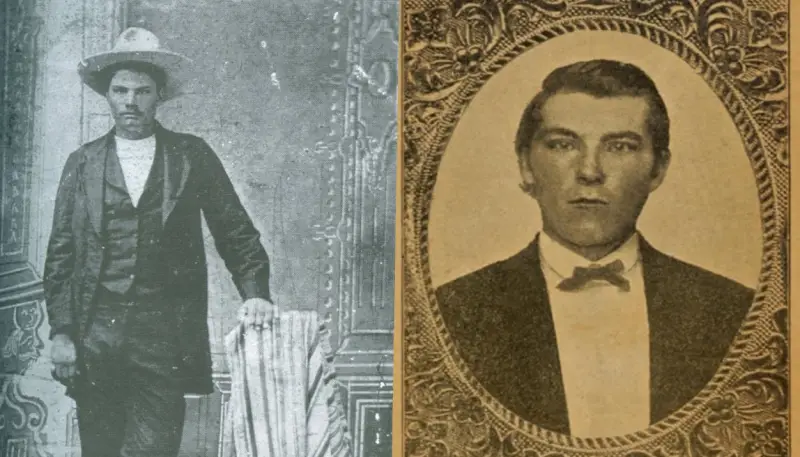
John Wesley Hardin was without a doubt one of the deadliest gunslingers and one of the darkest characters of the American Old West. He was the kind of guy who shoots first and asks questions later. Hardin claimed to have killed 42 people, although newspapers attributed only 27 murders to him. He was so hot-tempered in his dealings with weaponsthat he once killed a man for snoring loudly.
Hardin committed his first murder in 1868, when he was only 15 years old (shooting a former slave), after which he went on the run. However, unlike many other outlaws and bandits of the Wild West, he never killed women and children, did not rob stagecoaches, banks or trains, earning a living by playing cards.
Who was the most famous outlaw of the Wild West and how did he earn his fame?
A little about gunfights in the Wild West
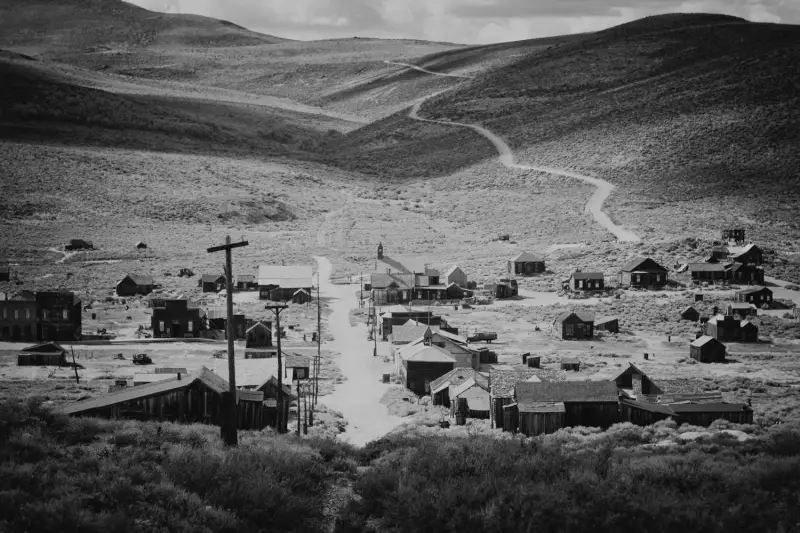
In 1886, the following advertisement was published in the Border Ruffian newspaper:
To many, this ad will seem frivolous and extremely funny, but this dark humor had a very definite meaning, and the residents of Coolidge, where it was posted, nodded their heads approvingly as they read it. Only a person with remarkable abilities could survive taking the position of sheriff in this troubled town.
It is often believed that the period known as the "Civil War for the Unification of the West", that is, the period of the Wild West or Old West, began in the 1850s and ended in 1919. Others date the period from 1865 to 1890. It was during this period that the Old West was at its most turbulent. In addition, in 1890, the concept of a frontier—an undeveloped border area with a population density of less than 2 people per square mile (0,77 people per square kilometer)—virtually disappeared as such.
There are many legends about crime in the Wild West - writers described in vivid colors thefts and robberies, clashes between owners of large and small ranches, farmers and cattle breeders, US citizens and immigrants. Many representatives of the law died trying to restore order. In Texas alone, about a hundred lawmen were killed in the ten years from 1869 to 1878 [2].
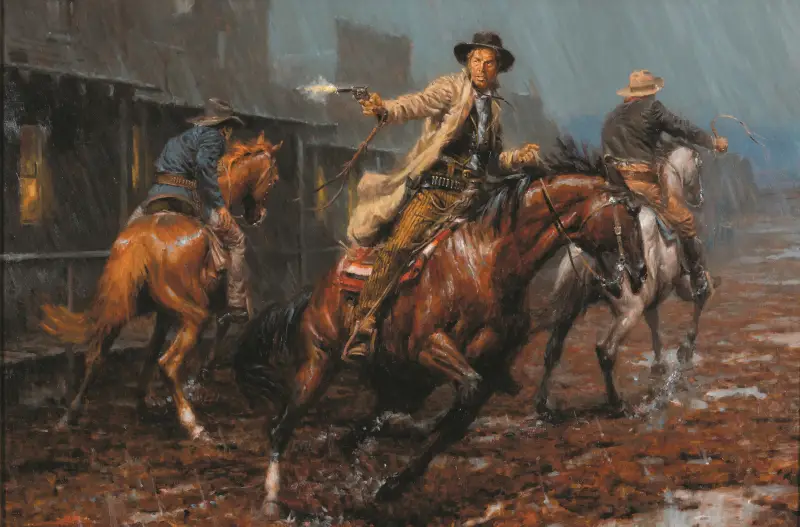
Most Old West gunfights are depicted in movies or books as two men getting into conflict and then waiting for their opponent to make the first move. However, this rarely happened. Often the shootout occurred spontaneously, with one person drawing a gun and the other reacting [3].
In popular folklore, men who had a reputation as worthy marksmen sought to fight another marksman with the same reputation. However, in reality, famous gunfighters tried to avoid collisions with each other as much as possible. Most famous gunfights rarely pitted two or more famous shooters, but rather one famous shooter against a lesser-known opponent or opponents [3].
Fast hip shooting was actually a fairly rare skill in the West, with only a few famous shooters such as Luke Short, John Wesley Hardin and Wild Bill Hickok being known for their quickness.
— the famous gunfighter, servant of the law Wyatt Earp once said.
This quote seems somewhat controversial, since, as shown historical examples, quite often in such skirmishes those who made the decision fastest won. For example, one of the most famous shootouts, “Four Dead in Five Seconds,” which took place on April 14, 1881 in El Paso, Texas, lasted only five seconds - Marshal Dallas Stoudenmire intervened in the shootout and killed three people (the fourth was killed by another shooter ).
John Wesley Hardin was also a man who would draw a revolver without a second thought.
John Wesley Hardin goes beyond the law
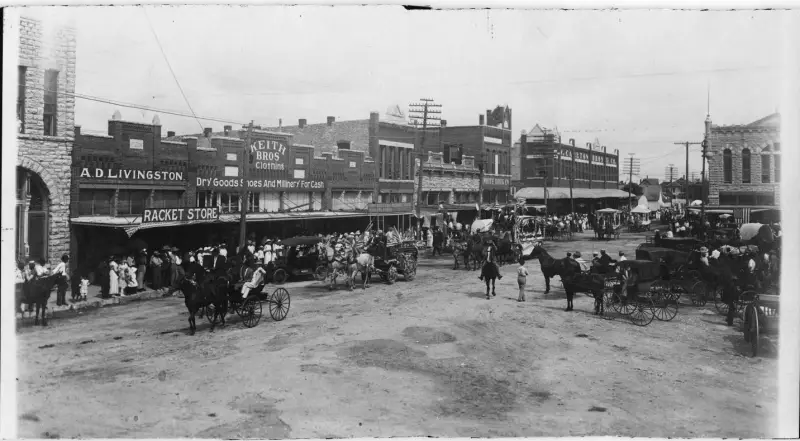
John Wesley Hardin was born on May 26, 1853, on the banks of the Red River in Bonham, Texas, the second of 10 children of James and Elizabeth Hardin. His pious Protestant parents (his father was a Methodist preacher) named him after John Wesley, the founder of Methodism [1].
John's relatives included Congressman Benjamin Hardin, Revolutionary War Colonel John Hardin of Virginia, and Civil War generals Martin Davis Hardin (Northerners) and Benjamin Hardin Helm* (Southerners). At the outbreak of the Civil War, Hardin's father was elected captain of the Confederacy. In 1862, at the age of nine, Hardin attempted to run away from home and join the Confederate Army.[4]
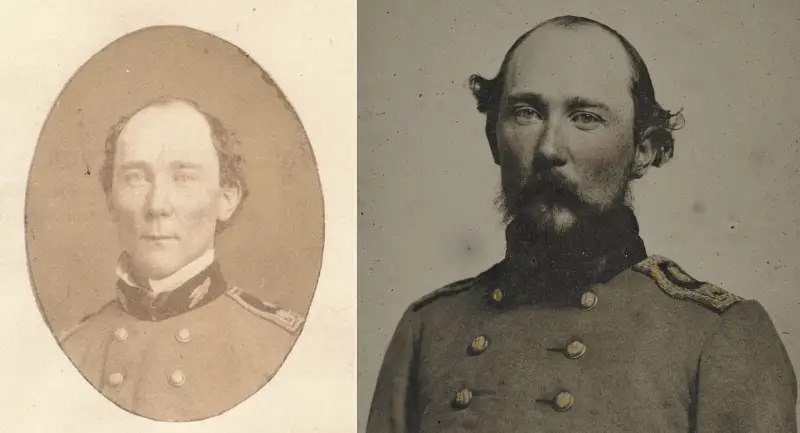
*Benjamin Hardin Helm (June 2, 1831 – September 21, 1863) was a famous American politician, lawyer and brigadier general. Son of Kentucky Governor John L. Helm. Before the American Civil War, he was the attorney for the state of Kentucky; after the outbreak of the war, he joined the Confederate army. As a brigadier general, Helm commanded the 1st Kentucky Brigade, better known as the Orphan Brigade. Killed on the battlefield during the Battle of Chickamauga
From childhood, young Hardin was distinguished by wild morals and was restless. In 1867, while attending school, Wes was bullied by another student, Charles Slaughter. Slaughter accused Hardin of being the author of graffiti on a school wall that offended a girl in his class. The result was a fight that ended with Hardin stabbing Slaughter, nearly killing him.
John Wesley Hardin killed his first person at age 15. A former black slave named Maege sometimes accompanied the young man in arm wrestling. But one day during a fight, Hardin's ring scratched Maje's face. Whether it happened by chance or on purpose is unknown, but they fought, and the black man vowed to take revenge on the young man [2].
The next morning he waylaid Hardin on a deserted forest road. There were no witnesses to the murder, and we know what actually happened only from the words of Hardin himself. In his autobiography, he wrote that the black man attacked him shouting and waving a stick, after which John pulled out a revolver and, firing a warning shot, opened fire to kill.
Hardin rushed to the house of his uncle Kleib Houlshusen, told him about what had happened and led him to the place where Mage lay bleeding. The black man was still alive and tried to reach his opponent.
Three days later Maege died. In his book, Hardin wrote that his father did not believe he would receive a fair trial in a state occupied by Northerners, where more than a third of the state police were former slaves.
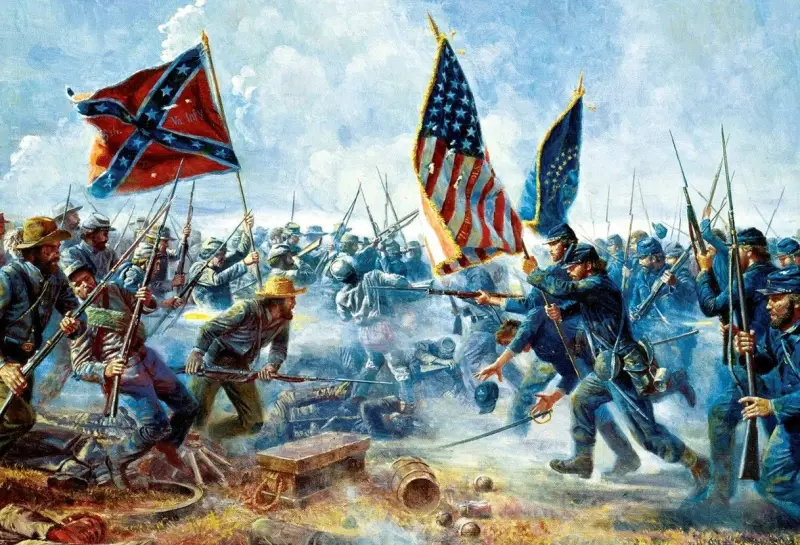
*During the American Civil War 1861-1865. Southerners called Northerners “Yankees” to emphasize their contempt for them. The term itself appeared long before the start of the Civil War. Southerners, in turn, were called “Dixie” by northerners.
Hardin claimed that several weeks later authorities eventually discovered his whereabouts and three Union soldiers were sent to arrest him, which John had been warned about by his older brother Joseph. However, instead of fleeing, Hardin decided to give battle to his pursuers. He ambushed the soldiers and killed them. Local farmers buried their bodies in a creek bed near the ambush site.
Hardin on the run
For some time, Hardin traveled with a random travel companion - criminal Frank Polk, who was wanted for murder, but he was soon arrested, and John was left alone. Later he taught for a time at a school in Pisgah.
In the winter of 1869, seventeen-year-old Hardin entered Towash (Hill County, Texas), where he again found himself in trouble. He won several games of cards from Benjamin Bradley, the leader of a gang that had long established its own laws in Tovash. The losses angered Bradley and he threatened to cut out Hardin's liver if he won again. Moreover, he forced Wes to take off his shoes and kicked him out onto the street barefoot.
At night, according to Hardin, Bradley decided to kill him, but Wesley pulled out both of his pistols and returned fire - one bullet hit Bradley in the head and the other in the chest [4].
Dozens of people saw this shootout, and according to them, Hardin drew his weapons in a rather unusual way - his holsters were sewn into his vest so that the handles of the revolvers were pointed inside his chest. In order to draw his weapon, he crossed his arms over his chest. Hardin claimed this was the fastest way to shoot, and he practiced it every day.[4]
Soon after this incident in the town of Cosse, Hardin again got into trouble, which ended in murder. In his autobiography he describes it this way:
In January 1871, Hardin was arrested for the murder of Laban City Marshal John Hoffman of Waco, Texas, but in his autobiography he denied committing the crime. After his arrest, Wesley was temporarily held in a log jail in Marshall while awaiting transfer to Waco for trial. While in prison, he bought a revolver from another prisoner.
Two police officers undertook to accompany Hardin to another city for trial - Captain Edward T. Stakes and an officer named Jim Smalley. According to Hardin, they tied him to a horse without a saddle for the duration of the trip. Hardin fled as officers set up camp. Wesley claimed that he was left alone with Smalley, who began taunting and beating the young prisoner with the butt of his pistol. Hardin pretended to cry and pressed himself against the horse's side. Hidden by the animal, he pulled out a pistol and mortally wounded Smalley, then used his horse to escape.
Meeting Wild Bill Hickok
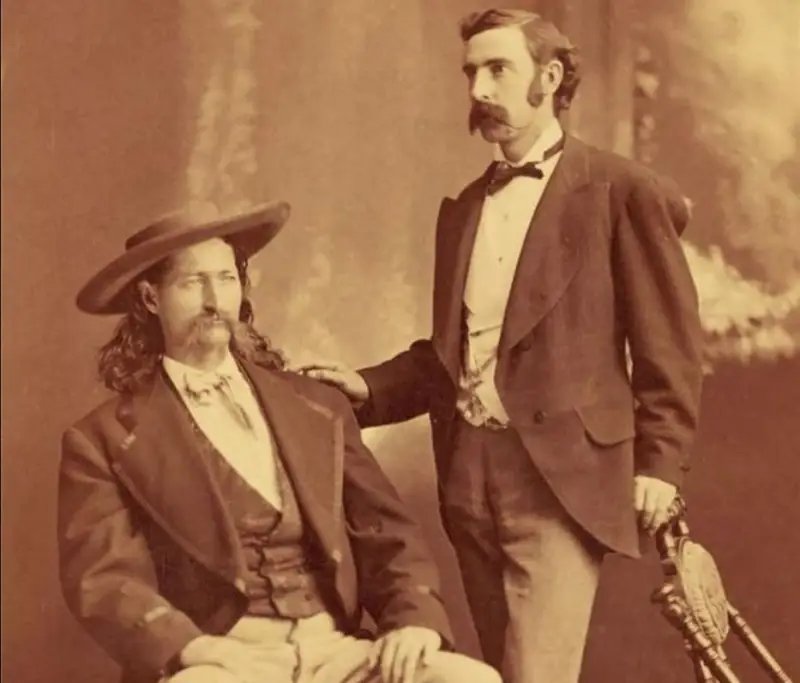
In early 1871, John Wesley Hardin arrived in Abilene, where Wild Bill Hickok was the sheriff at the time. At that time, John was already 18 years old, and he had a reputation as a dangerous gunfighter. This allegedly happened because of the following incident - Hickok told Hardin (using the pseudonym Wesley Clemmons) to surrender his weapon, because he was in his city, because he was carrying it in violation of city rules, and he handed the marshal the revolvers with the handles forward, but then quickly turned them, pointing guns in his face and jumping back.
Wild Bill was amazed by Hardin's dexterity, but the confrontation ended there, for John submitted to Hickok. The reliability of this story raises questions, since no one except Hardin himself mentioned it. Hickok biographer Joseph Rosa believes that if this story happened, it did not happen at all as Hardin described it.
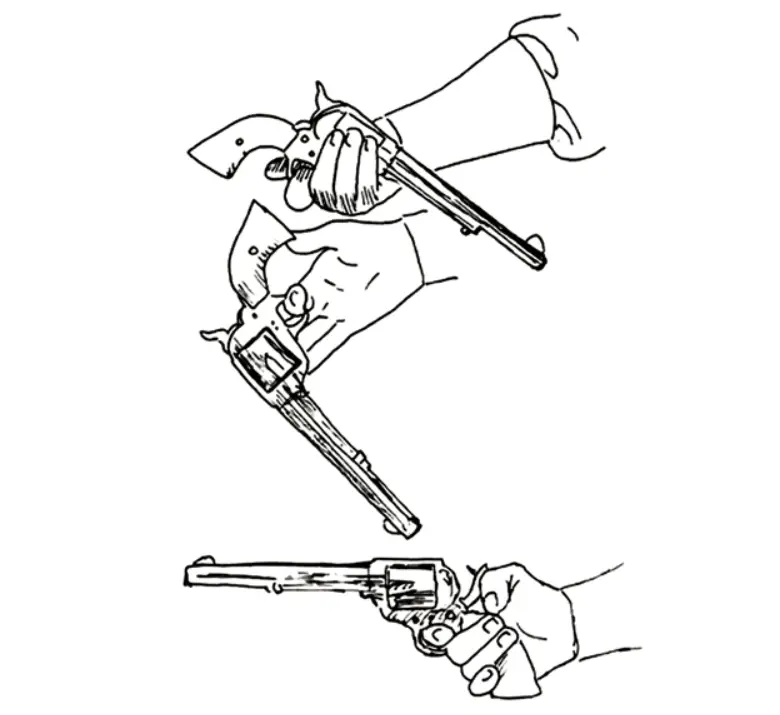
The revolver trick Hardin used to deceive his opponent.
Hardin met Hickok again during a cattle drive in August 1871. This time, Hickok allowed Hardin to bring his pistols into town—something he never allowed others to do. However, soon after this an incident occurred, after which John was forced to flee the city.
On August 6, 1871, Hardin, his cousin Clements, and a rancher friend named Charles Couger stayed overnight at the American House Hotel. Clements and Hardin lived in one room, and Cooger lived in the next room. That evening all three were very drunk. That night, Hardin was awakened by loud snoring coming from Cooger's room. He first shouted at the man several times to turn over and then, irritated by the lack of response, fired several bullets through a common wall in an attempt to wake him up. One of the bullets hit Kuger in the heart, and he died almost instantly [5].
Although Hardin did not intend to kill Cooger, he violated Hickok's ordinance prohibiting the firing of guns within city limits. Half-dressed and still drunk, John and Clements went out through a second-floor window onto the roof of the hotel and saw Hickok arrive along with four police officers. Believing that Wild Bill would kill him, Hardin jumped from the roof onto the street and hid in a haystack for the rest of the night. In the morning he stole a horse and fled the city.
After this incident, Hardin developed a reputation for himself as a
Arrest and imprisonment
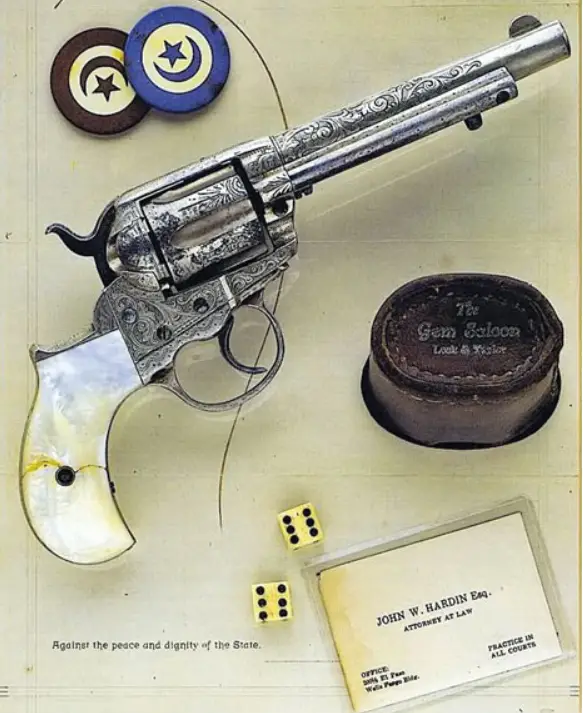
Hardin's business card and Model 1877 Colt revolver seized from him in May 1895 when he was arrested for illegally carrying a weapon in El Paso
On February 29, 1872, in Gonzales, he married the daughter of a local ranchero, Jane Bowen, who was 15 years old at that time. That same year, he was wounded by a shotgun blast during an argument at the Gates Saloon in Trinity, Texas. He was shot by Phil Sublette, who lost money to him in a poker game. While recovering from his wounds, Hardin decided he wanted to settle down. After surrendering to Sheriff Reagan of Cherokee County, he was wounded in the right knee by an accidental shot from a nervous deputy. Hardin, lying in his hospital bed, surrendered to authorities, turning over his gun to Sheriff Reagan and asking to be tried for his past crimes as a way to "start over."
However, he was not given such an opportunity. Reagan decided to pin so many murders on Hardin that John, who learned about it, changed his mind. A relative smuggled a hacksaw into the prison for Hardin, and he escaped by cutting through the bars of a prison window. A $100 reward was offered for his capture.
Hardin went on the run again. They tried unsuccessfully to catch him, and he was given the opportunity to devote more time to his own family. With Jane he had three children - two daughters and a son [2].
In May 1874, Hardin was found in Comanche Township by Brown County Sheriff's Deputy Charles Webb. When Webb entered the saloon, John immediately asked if he had come to arrest him. Webb said no, and Hardin invited him to the hotel for drinks. However, when John turned away, Webb pointed a revolver at him. Warned by his friends, Hardin jumped to the side, pulled out his revolver and pulled the trigger. The sheriff also fired. Hardin was shot in the side and Webb was fatally shot in the head.
Hardin managed to escape from Comanche with Clements, but his brother Joe and two of his friends were lynched by a mob of local residents [2].
In 1875, the governor of Texas offered a $4000 reward for Hardin's capture. On August 24, 1877, rangers and local authorities encountered Hardin on a train in Florida. He tried to draw his Colt, but was knocked down and lost consciousness. Hardin himself claimed that he was captured while smoking a pipe, and that the gun was found under his shirt only after his arrest.
Hardin was soon brought to trial and on June 5, 1878, was sentenced to 25 years in prison. While in prison, he wrote an autobiography. In it, he greatly exaggerated stories about his life. In his autobiography he spoke of himself as "a warrior born of battle».
He wrote.
In 1892, Hardin was described as being 5,9 feet (1,8 m) tall and weighing 160 pounds (73 kg), with a fair complexion, brown eyes, dark hair, and scars from wounds on his right knee, left hip, right side, hip, elbow, shoulder and back.
While Hardin was in prison, his father and mother died. And on November 6, 1892, his first wife Jane died of tuberculosis.
Death of Hardin
On February 17, 1894, Hardin was released early from prison after serving seventeen years. He was forty years old when he returned to Gonzales, Texas.
For some time, Hardin studiously avoided saloons and gambling tables. In prison, he wasted no time and studied to become a lawyer. He opened a law office and tried to work honestly [2]. On January 9, 1895, Hardin married a 15-year-old girl named Callie Lewis, who reminded him of Jane, but the marriage quickly dissolved, although it was not legally dissolved.
Some time later, John moved to El Paso, where he continued to practice law. Annie Williams, his landlady, said that although Hardin tried to get rid of his old image, many of his old habits remained. In addition, he was afraid that someone would decide to kill him in order to earn a name for themselves.
- said Annie Williams [2].
Soon, Hardin had a conflict with lawman John Selman Jr., who arrested John’s acquaintance. Hardin confronted Selman and the two men argued. Selman's 56-year-old father, Constable John Selman Sr. (himself a notorious marksman and former outlaw), approached Hardin on the afternoon of August 19, 1895, and the two men began to speak in a raised voice.
That evening Hardin went to the Acme Saloon to play craps. Shortly before midnight, Selman Sr. entered the saloon, approached Hardin from behind and shot him in the head, killing him on the spot. While Hardin lay on the floor, Selman fired three more shots at him. John Wesley Hardin was buried the next day at Concordia Cemetery in El Paso. His killer himself was soon killed in a shootout with US Marshal George Scarborough on April 6, 1896, during an altercation after a card game.
Hardin's autobiography, which was the subject of litigation, was published in 1896. Hardin was an unusual type of killer - a handsome, well-mannered man from a well-to-do family who always insisted that he only shot to save his life. However, the fact that there were more than thirty nicks on John's gun suggests that a more dangerous gunman has never operated in Texas.
Использованная литература:
[1]. Leon Claire Metz. The encyclopedia of lawyers, outlaws, and gunfighters. New York, 2003.
[2]. Yuri Stukalin. Gunfighters of the Wild West - sheriffs, bandits, cowboys, gunfighters. – M., Eksmo, 2013.
[3]. O'Neal, Bill. Encyclopedia of Western Gunfighters. University of Oklahoma Press, 1979.
[4]. Hardin, John Wesley. The Life of John Wesley Hardin As Written by Himself; reprint Jun 1977; University of Oklahoma Press.
[5]. Leon Claire Metz. John Wesley Hardin. Dark Angel of Texas. University of Oklahoma Press, 1998.
Information